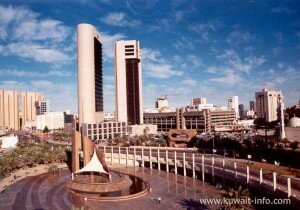Kuwait City is the capital of Kuwait
A capital having numerous high-rise office buildings, luxury hotels, wide boulevards and well-tended parks with lush green gardens.
The charm of Kuwait City invites visitors and residents alike to spend hours exploring historical and cultural points of interest, all of which are situated within short driving distances from each other. Seven ring-roads encircle the city and connect wide boulevards.
An oasis in the desert, the city offers a fascinating blend of the old Arab world with clear evidence of a modernized
Gulf state. Beginning in the 1930s, slowly at first, the city began to develop from a nomadic port town into a booming Middle Eastern metropolis.

With prosperity well in hand, the city of a large urban area has expanded its downtown area (Safat) into a network of residential and commercial communities. An infrastructure, including multi-level highways, facile movement of goods and services, and international airline connections arose in parallel conjunction with skyscrapers, homes, and population. Today a non-stop expansion continues, accommodating Kuwaitis, which constitute of about two-thirds of the country’s people with foreign residents to enhance the growth of Kuwait.
Its expansion to the south has already overtaken Al-Ahmadi and to the west has nearly reached Al-Jahra.
To the south-west of Safat, lies the prominent Shuwaikh Port, the main Kuwait University campus, and a large industrial area.
Across town to the south-east and bordering on the Gulf is Salmiya, a primarily expatriate residential area where shopping is as diverse as the cosmopolitan ethnic mix.
Kuwaiti-owned villas built on government granted land occupy various corners of outlying districts. Dahiat Abdullah Al Salem, Yarmouk, and Qortuba, considered as some of the most prestigious neighborhoods, rest to the south of Safat.
